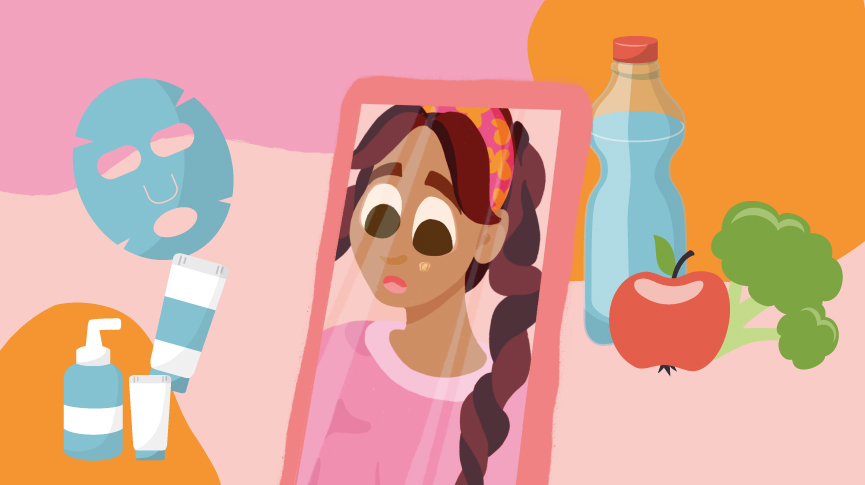4 Best Ways to Troubleshoot Period Acne

You’re out of your teens and into the acne-free zone, right? WRONG. Unfortunately, the tyranny continues after puberty, all because of a little something called the hormone cycle.
Yes, you’d totally be forgiven for thinking that pimples were a thing of the past, but alas, you and your skin remain at the will of those fluctuating hormones, and breakouts at certain times of the month are a totally normal part of this 4-week epic.
The good news? You don’t have to be a slave to your hormones! Get one step ahead and plot your rebellion against zits, cystic acne and oily skin with our troubleshooting guide!
Why Am I Breaking Out?
The key to tackling hormonal acne is understanding how the hormones in your body are affecting your complexion at different times in your cycle. So here we go!
At the beginning of week 3 of your hormone cycle (two weeks before your period begins), the hormones estrogen and progesterone drop dramatically if your egg has not been fertilized. At the same time, your body will experience a slight increase in testosterone.
Testosterone is a type of androgen, a hormone that amongst other things, triggers oil production (sebum) in skin and hair follicles. Oil provides the perfect breeding ground for bacteria and so with increased levels of testosterone during the 3rd week of your cycle, it’s common to experience clogged pores, pimples and cystic acne (those somewhat painful bumps just under the skin) – usually around the chin and jawline.
While it’s most likely you’ll experience trouble skin around this time of the month, those boosted levels of testosterone can wreak havoc on your skin well into your cycle, sometimes continuing into your period.
So you may be wondering, if this is a hormonal problem, how can you possibly fight this kind of acne? Many ways! Here are our top 4 tips – combine for optimum results!
1. Up Your Skincare Game
This one is pretty obvious. During week 3 of your cycle, testosterone levels increase while estrogen levels drop, which can contribute to your skin being dehydrated. Yes, your skin CAN be oily and dehydrated at the same time. To tackle this unholy alliance there are several things you can do.
Firstly, it’s important to adopt a regular skincare regimen; cleansing, toning and moisturizing each morning and night. In particular, use a cleanser with salicylic acid the week prior to your period, as this acne-busting ingredient helps to remove excess oil and give your pores a deep clean.
To quench your skin’s thirst, drink plenty of water and if you’re feeling especially fancy, stick on a facemask! You should also avoid touching your skin, smoking and drinking alcohol
2. Watch Your Diet
It can be hard to resist going on a PMS-induced junk food binge, but maintaining a healthy diet is a vital part of keeping a clear, healthy complexion.
Do:
- Drink more water
- Eat more leafy green veggies
- Cut back on sugar (including lactose!)
Don’t:
- Get liquored up – alcohol = sugar, sugar = breakouts
- Pig out on processed foods – fresher is better!
3. Get Movin’
Regular exercise is an important part of overall health but when it comes to period breakouts, one of the best things you can do is break a sweat. Sweat helps cleanse pores by pushing excess dirt and bacteria to the surface. Plus, exercise releases endorphins to make you feel good!
4. The Pill
Hormonal birth control – including oral contraceptives, patches and vaginal rings – regulate hormone levels to prevent pregnancy. Certain forms containing both estrogen and progesterone lower the amount of androgens in your body, and thus lower sebum levels. These methods of birth control lead to fewer acne breakouts for many women, but be sure to talk with your healthcare provider before deciding if this is right for you.

A collective group of “lady experts” at Intimina who love sharing our personal experiences, even when they are a little too personal. We believe it’s time to start breaking down the taboos around menstruation, motherhood, and menopause, and start owning our female health.


